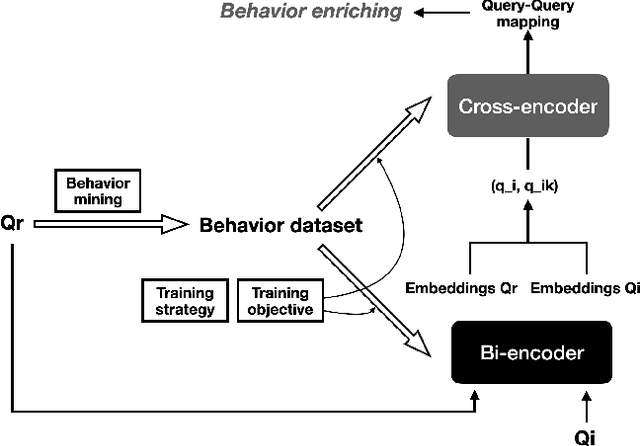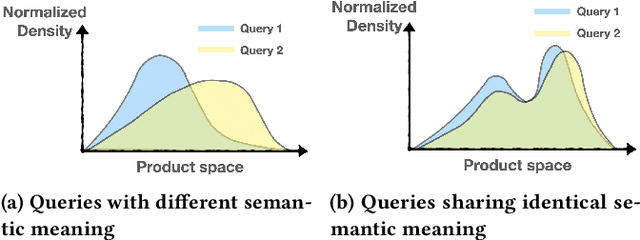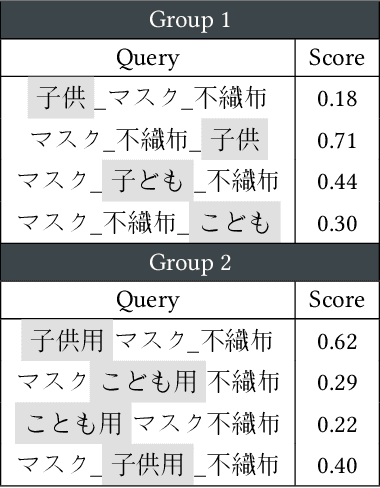Ziqi Zhang
Peking University
How to Make Cross Encoder a Good Teacher for Efficient Image-Text Retrieval?
Jul 10, 2024



Abstract:Dominant dual-encoder models enable efficient image-text retrieval but suffer from limited accuracy while the cross-encoder models offer higher accuracy at the expense of efficiency. Distilling cross-modality matching knowledge from cross-encoder to dual-encoder provides a natural approach to harness their strengths. Thus we investigate the following valuable question: how to make cross-encoder a good teacher for dual-encoder? Our findings are threefold:(1) Cross-modal similarity score distribution of cross-encoder is more concentrated while the result of dual-encoder is nearly normal making vanilla logit distillation less effective. However ranking distillation remains practical as it is not affected by the score distribution.(2) Only the relative order between hard negatives conveys valid knowledge while the order information between easy negatives has little significance.(3) Maintaining the coordination between distillation loss and dual-encoder training loss is beneficial for knowledge transfer. Based on these findings we propose a novel Contrastive Partial Ranking Distillation (CPRD) method which implements the objective of mimicking relative order between hard negative samples with contrastive learning. This approach coordinates with the training of the dual-encoder effectively transferring valid knowledge from the cross-encoder to the dual-encoder. Extensive experiments on image-text retrieval and ranking tasks show that our method surpasses other distillation methods and significantly improves the accuracy of dual-encoder.
ADR-BC: Adversarial Density Weighted Regression Behavior Cloning
May 28, 2024



Abstract:Typically, traditional Imitation Learning (IL) methods first shape a reward or Q function and then use this shaped function within a reinforcement learning (RL) framework to optimize the empirical policy. However, if the shaped reward/Q function does not adequately represent the ground truth reward/Q function, updating the policy within a multi-step RL framework may result in cumulative bias, further impacting policy learning. Although utilizing behavior cloning (BC) to learn a policy by directly mimicking a few demonstrations in a single-step updating manner can avoid cumulative bias, BC tends to greedily imitate demonstrated actions, limiting its capacity to generalize to unseen state action pairs. To address these challenges, we propose ADR-BC, which aims to enhance behavior cloning through augmented density-based action support, optimizing the policy with this augmented support. Specifically, the objective of ADR-BC shares the similar physical meanings that matching expert distribution while diverging the sub-optimal distribution. Therefore, ADR-BC can achieve more robust expert distribution matching. Meanwhile, as a one-step behavior cloning framework, ADR-BC avoids the cumulative bias associated with multi-step RL frameworks. To validate the performance of ADR-BC, we conduct extensive experiments. Specifically, ADR-BC showcases a 10.5% improvement over the previous state-of-the-art (SOTA) generalized IL baseline, CEIL, across all tasks in the Gym-Mujoco domain. Additionally, it achieves an 89.5% improvement over Implicit Q Learning (IQL) using real rewards across all tasks in the Adroit and Kitchen domains. On the other hand, we conduct extensive ablations to further demonstrate the effectiveness of ADR-BC.
Reinformer: Max-Return Sequence Modeling for offline RL
May 14, 2024Abstract:As a data-driven paradigm, offline reinforcement learning (RL) has been formulated as sequence modeling that conditions on the hindsight information including returns, goal or future trajectory. Although promising, this supervised paradigm overlooks the core objective of RL that maximizes the return. This overlook directly leads to the lack of trajectory stitching capability that affects the sequence model learning from sub-optimal data. In this work, we introduce the concept of max-return sequence modeling which integrates the goal of maximizing returns into existing sequence models. We propose Reinforced Transformer (Reinformer), indicating the sequence model is reinforced by the RL objective. Reinformer additionally incorporates the objective of maximizing returns in the training phase, aiming to predict the maximum future return within the distribution. During inference, this in-distribution maximum return will guide the selection of optimal actions. Empirically, Reinformer is competitive with classical RL methods on the D4RL benchmark and outperforms state-of-the-art sequence model particularly in trajectory stitching ability. Code is public at \url{https://github.com/Dragon-Zhuang/Reinformer}.
Towards Scalability and Extensibility of Query Reformulation Modeling in E-commerce Search
Feb 17, 2024



Abstract:Customer behavioral data significantly impacts e-commerce search systems. However, in the case of less common queries, the associated behavioral data tends to be sparse and noisy, offering inadequate support to the search mechanism. To address this challenge, the concept of query reformulation has been introduced. It suggests that less common queries could utilize the behavior patterns of their popular counterparts with similar meanings. In Amazon product search, query reformulation has displayed its effectiveness in improving search relevance and bolstering overall revenue. Nonetheless, adapting this method for smaller or emerging businesses operating in regions with lower traffic and complex multilingual settings poses the challenge in terms of scalability and extensibility. This study focuses on overcoming this challenge by constructing a query reformulation solution capable of functioning effectively, even when faced with limited training data, in terms of quality and scale, along with relatively complex linguistic characteristics. In this paper we provide an overview of the solution implemented within Amazon product search infrastructure, which encompasses a range of elements, including refining the data mining process, redefining model training objectives, and reshaping training strategies. The effectiveness of the proposed solution is validated through online A/B testing on search ranking and Ads matching. Notably, employing the proposed solution in search ranking resulted in 0.14% and 0.29% increase in overall revenue in Japanese and Hindi cases, respectively, and a 0.08\% incremental gain in the English case compared to the legacy implementation; while in search Ads matching led to a 0.36% increase in Ads revenue in the Japanese case.
Context-Former: Stitching via Latent Conditioned Sequence Modeling
Feb 03, 2024



Abstract:Offline reinforcement learning (RL) algorithms can improve the decision making via stitching sub-optimal trajectories to obtain more optimal ones. This capability is a crucial factor in enabling RL to learn policies that are superior to the behavioral policy. On the other hand, Decision Transformer (DT) abstracts the decision-making as sequence modeling, showcasing competitive performance on offline RL benchmarks, however, recent studies demonstrate that DT lacks of stitching capability, thus exploit stitching capability for DT is vital to further improve its performance. In order to endow stitching capability to DT, we abstract trajectory stitching as expert matching and introduce our approach, ContextFormer, which integrates contextual information-based imitation learning (IL) and sequence modeling to stitch sub-optimal trajectory fragments by emulating the representations of a limited number of expert trajectories. To validate our claim, we conduct experiments from two perspectives: 1) We conduct extensive experiments on D4RL benchmarks under the settings of IL, and experimental results demonstrate ContextFormer can achieve competitive performance in multi-IL settings. 2) More importantly, we conduct a comparison of ContextFormer with diverse competitive DT variants using identical training datasets. The experimental results unveiled ContextFormer's superiority, as it outperformed all other variants, showcasing its remarkable performance.
Set Prediction Guided by Semantic Concepts for Diverse Video Captioning
Dec 25, 2023



Abstract:Diverse video captioning aims to generate a set of sentences to describe the given video in various aspects. Mainstream methods are trained with independent pairs of a video and a caption from its ground-truth set without exploiting the intra-set relationship, resulting in low diversity of generated captions. Different from them, we formulate diverse captioning into a semantic-concept-guided set prediction (SCG-SP) problem by fitting the predicted caption set to the ground-truth set, where the set-level relationship is fully captured. Specifically, our set prediction consists of two synergistic tasks, i.e., caption generation and an auxiliary task of concept combination prediction providing extra semantic supervision. Each caption in the set is attached to a concept combination indicating the primary semantic content of the caption and facilitating element alignment in set prediction. Furthermore, we apply a diversity regularization term on concepts to encourage the model to generate semantically diverse captions with various concept combinations. These two tasks share multiple semantics-specific encodings as input, which are obtained by iterative interaction between visual features and conceptual queries. The correspondence between the generated captions and specific concept combinations further guarantees the interpretability of our model. Extensive experiments on benchmark datasets show that the proposed SCG-SP achieves state-of-the-art (SOTA) performance under both relevance and diversity metrics.
Adaptive Proximal Policy Optimization with Upper Confidence Bound
Dec 12, 2023



Abstract:Trust Region Policy Optimization (TRPO) attractively optimizes the policy while constraining the update of the new policy within a trust region, ensuring the stability and monotonic optimization. Building on the theoretical guarantees of trust region optimization, Proximal Policy Optimization (PPO) successfully enhances the algorithm's sample efficiency and reduces deployment complexity by confining the update of the new and old policies within a surrogate trust region. However, this approach is limited by the fixed setting of surrogate trust region and is not sufficiently adaptive, because there is no theoretical proof that the optimal clipping bound remains consistent throughout the entire training process, truncating the ratio of the new and old policies within surrogate trust region can ensure that the algorithm achieves its best performance, therefore, exploring and researching a dynamic clip bound for improving PPO's performance can be quite beneficial. To design an adaptive clipped trust region and explore the dynamic clip bound's impact on the performance of PPO, we introduce an adaptive PPO-CLIP (Adaptive-PPO) method that dynamically explores and exploits the clip bound using a bandit during the online training process. Furthermore, ample experiments will initially demonstrate that our Adaptive-PPO exhibits sample efficiency and performance compared to PPO-CLIP.
No Privacy Left Outside: On the Security of TEE-Shielded DNN Partition for On-Device ML
Oct 11, 2023



Abstract:On-device ML introduces new security challenges: DNN models become white-box accessible to device users. Based on white-box information, adversaries can conduct effective model stealing (MS) and membership inference attack (MIA). Using Trusted Execution Environments (TEEs) to shield on-device DNN models aims to downgrade (easy) white-box attacks to (harder) black-box attacks. However, one major shortcoming is the sharply increased latency (up to 50X). To accelerate TEE-shield DNN computation with GPUs, researchers proposed several model partition techniques. These solutions, referred to as TEE-Shielded DNN Partition (TSDP), partition a DNN model into two parts, offloading the privacy-insensitive part to the GPU while shielding the privacy-sensitive part within the TEE. This paper benchmarks existing TSDP solutions using both MS and MIA across a variety of DNN models, datasets, and metrics. We show important findings that existing TSDP solutions are vulnerable to privacy-stealing attacks and are not as safe as commonly believed. We also unveil the inherent difficulty in deciding optimal DNN partition configurations (i.e., the highest security with minimal utility cost) for present TSDP solutions. The experiments show that such ``sweet spot'' configurations vary across datasets and models. Based on lessons harvested from the experiments, we present TEESlice, a novel TSDP method that defends against MS and MIA during DNN inference. TEESlice follows a partition-before-training strategy, which allows for accurate separation between privacy-related weights from public weights. TEESlice delivers the same security protection as shielding the entire DNN model inside TEE (the ``upper-bound'' security guarantees) with over 10X less overhead (in both experimental and real-world environments) than prior TSDP solutions and no accuracy loss.
Beyond OOD State Actions: Supported Cross-Domain Offline Reinforcement Learning
Jun 22, 2023



Abstract:Offline reinforcement learning (RL) aims to learn a policy using only pre-collected and fixed data. Although avoiding the time-consuming online interactions in RL, it poses challenges for out-of-distribution (OOD) state actions and often suffers from data inefficiency for training. Despite many efforts being devoted to addressing OOD state actions, the latter (data inefficiency) receives little attention in offline RL. To address this, this paper proposes the cross-domain offline RL, which assumes offline data incorporate additional source-domain data from varying transition dynamics (environments), and expects it to contribute to the offline data efficiency. To do so, we identify a new challenge of OOD transition dynamics, beyond the common OOD state actions issue, when utilizing cross-domain offline data. Then, we propose our method BOSA, which employs two support-constrained objectives to address the above OOD issues. Through extensive experiments in the cross-domain offline RL setting, we demonstrate BOSA can greatly improve offline data efficiency: using only 10\% of the target data, BOSA could achieve {74.4\%} of the SOTA offline RL performance that uses 100\% of the target data. Additionally, we also show BOSA can be effortlessly plugged into model-based offline RL and noising data augmentation techniques (used for generating source-domain data), which naturally avoids the potential dynamics mismatch between target-domain data and newly generated source-domain data.
The Barriers to Online Clothing Websites for Visually Impaired People: An Interview and Observation Approach to Understanding Needs
May 19, 2023



Abstract:Visually impaired (VI) people often face challenges when performing everyday tasks and identify shopping for clothes as one of the most challenging. Many engage in online shopping, which eliminates some challenges of physical shopping. However, clothes shopping online suffers from many other limitations and barriers. More research is needed to address these challenges, and extant works often base their findings on interviews alone, providing only subjective, recall-biased information. We conducted two complementary studies using both observational and interview approaches to fill a gap in understanding about VI people's behaviour when selecting and purchasing clothes online. Our findings show that shopping websites suffer from inaccurate, misleading, and contradictory clothing descriptions; that VI people mainly rely on (unreliable) search tools and check product descriptions by reviewing customer comments. Our findings also indicate that VI people are hesitant to accept assistance from automated, but that trust in such systems could be improved if researchers can develop systems that better accommodate users' needs and preferences.
 Add to Chrome
Add to Chrome Add to Firefox
Add to Firefox Add to Edge
Add to Edge